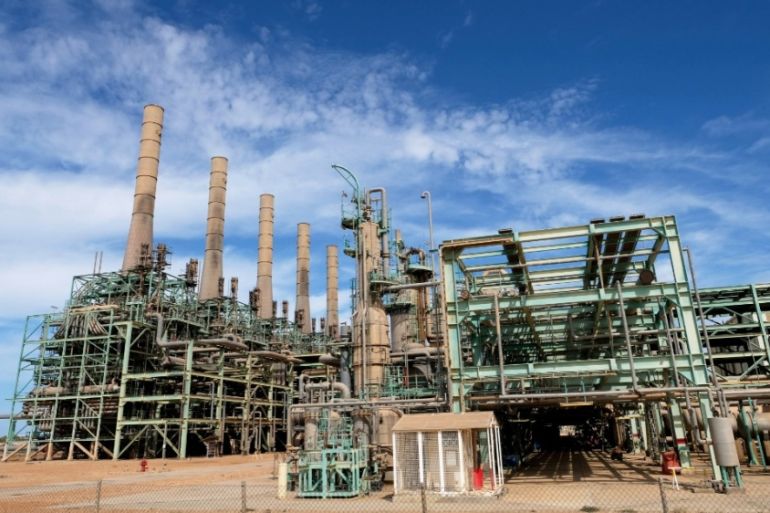Production resumes at second oilfield in Libya
National Oil Corporation says production restarted at Al-Fil oilfield, which has been closed since January.

Libya’s National Oil Corporation (NOC) has announced it has restarted production at the Al-Fil oilfield with initial output of 12,000 barrels per day (bpd) and will return to full capacity of 70,000 bpd within 14 days.
“We announce the resumption of production at the Al-Fil field and the lifting of force majeure over crude exports from Al-Sharara and Al-Fil,” the NOC said in a statement on Monday.
Keep reading
list of 3 itemsLibya war costing $77m in oil revenue per day
Eastern Libya’s FM says cannot force end to oil blockade
A force majeure is a legal provision that exempts companies from meeting contractual obligations because of events beyond their control.
Libya’s NOC has used the instrument repeatedly in recent years due to fighting over oilfields and export terminals.
The NOC’s announcement came a day after output resumed at the country’s largest oil field, Al-Sharara, following a string of victories against renegade General Khalifa Haftar by forces backing Libya’s Tripoli-based unity government.
|
|
Haftar’s forces seized the fields during an offensive early last year in which he seized much of the country’s south followed by a push on the capital.
But in recent weeks, the United Nations-recognised Government of National Accord has pushed Haftar’s forces away from Tripoli and advanced eastwards.
“The NOC will begin crude exports as soon as possible,” said NOC chairman Mustafa Sanallah in the statement on the organisation’s website.
“I can confirm that crude oil has arrived at the Zawiya refinery [45km or 28 miles west of Tripoli] to begin petrol production for the local market” and relieve the state of the cost of importing hydrocarbons, he said.
Libya, which has Africa’s richest proven crude reserves and relies on oil exports for almost all of its state revenues, plunged into violence with the toppling and killing of longtime dictator Muammar Gaddafi in 2011.
The country’s oilfields, pipelines and terminals have frequently been damaged in fighting.
Libya had been producing some 1.25 million bpd before January, but this fell drastically as armed groups allied with Haftar blocked key oil infrastructure.
Al-Fil, located some 750km (466 miles) southwest of Tripoli, is jointly managed by the NOC and Italian energy giant Eni.
It is estimated to hold over 1.2 billion barrels, with production capacity of 70,000 bpd. Interruptions to oil exports have cost the Libyan treasury billions of dollars.